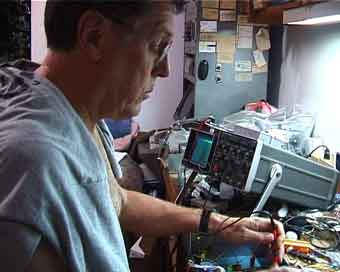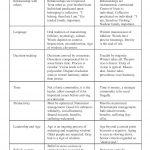South Africa’s National Building Regulations
 The Site That Tells You All About Building Regulations
The Site That Tells You All About Building Regulations
South Africa’s National Building Regulations were originally produced as a set of functional guidelines for anybody building any type of structure. They were not intended to be prescriptive in terms of what people should build, but they do stipulate important “dos” and “don’ts” – many of which are in fact mandatory. So if you are planning to build, this is a document you should familiarise yourself with.
If you want to know more about these important regulations, have a look at the scroll-down menu under National Building Regulations (SA). While these topics are those found in the regulations, we have not duplicated the regulations. Instead we have discussed the issues the regulations cover in easy to understand pages.
Read more: http://sans10400.co.za/
African Slum Journal
African Slum Journal empoweres young africans to tell their own stories straight from the slums of Nairobi and Kenia
See more: http://africanslumjournal.com/mobile
Norman White – But I would prefer that it sneaks in through some back door
The Normill is an old watermill in Durham (Ontario, Canada), a village 80 miles Northwest of Toronto. The big stone building next to a stunningly beautiful pond, was bought years ago by artist Norman T White (San Antonio, Texas, 1938)
The mill smells like old flour, animal carcasses and bat shit and harbours the soul of Norman White. His personal history is visible in the old photos of the Dutch fisherman relatives of his mother. The building is littered with the material his work is made of: machine parts and a bunch of old computers. The raw architecture of the construction seems hardly altered in the years White lived in it. He sleeps over the gas stove in the kitchen in a small attic. The reason why he lodges here lies in the cold winters, when snow piles up and the temperature drops below zero. The building is spacious: it has a clean working spot; a big storage space, a cellar, actually a steel workshop; a room full of closets and drawers stacked with electronics; enough room for a large bat colony that lives in the cracks in the impressive walls.
You can walk around for hours, investigate the archives, the boxes with machine parts and printed circuit boards, wired art pieces in themselves. In the corner of the cellar leans a big raft made of plastic bottles against the wall.
Norman White, in his seventies, looks young: more a boy then a man. His friends say that his looks never changed, he is the same as thirty years ago. White is a myth in and outside of Canada. He is one of the godfathers of electronic-, machine- and robotic art and taught for more then twenty five years at the Ontario College of Art and Design in Toronto. His offspring is well known in the electronic art world, Doug Back, Peter Flemming, Jeff Man, Graham Smith and David Rokeby are his former students. And they all visit his annual parties at the Normill, to celebrate their friendship with fires, swimming, music and art. Regularly artists from all over the world join and camp at the mill. White and his friends organised robot fights, machine wrestling: ‘Rawbotics & Sumo robots’ long before it became fashionable. Read more
Reusing Urban Spaces and Places
By Rashiq Fataar. futurecapetown.com – March, 4, 2013.
The #builtheritage chat, which focuses on heritage and preservation issues, is celebrating its two-year anniversary in March. The chat started with an idea, some twitter conversation and finally e-mails between the National Trust for Historic Preservation in the USA, and myself, a heritage consultant in Ontario, Canada.
The spirit of the chat has always been communication and collaboration. We’ve had several chats focused on partner’s programs, such as one with Habitat for Humanity on their rehabilitation projects. So to celebrate our second anniversary, we’re partnering with our twitter chat neighbour – #citytalk, which focuses on broad urban issues and sustainability. Since this is a special chat both because of our anniversary and our amazing partner, we’ve decided to revisit our 1st topic – adaptive reuse.
Surili Sheth – Understanding Slum Dwellers: Part 1 – “Slum Dweller”
ahigloval.wordpress.com. March, 2013 – I use the term “slum dweller” as a descriptive phrase – and I choose to use it because it is how people living in slums refer to themselves, it describes the place they live (which is the subject of this post), and it acknowledges the existence of the type of informal settlement that a billion people in the world live in today – slums.
Slum policy
In developing an understanding of slum development policy, institutions have often failed to take services, environment, and community, and how these are linked to the physical structures and productivity of the people living in the slum, into consideration.
There are three major, interconnected aspects to slums that policymakers are generally concerned about:
1) The unused or underutilized economic worth – market/productive capacity – of the people living in the slum.
2) What part the slum (both the physical infrastructure and the people within it) plays in the larger context of the city, state, or country.
3) The deprivations and poverty the people living in a slum face.
Often, the connections between these three aspects go unrecognized and they are treated as separate issues in policies that attempt to address the informal settlements. I argue that a true inclusive development policymaker must possess an adequate understanding of all three, using India as an example.
Read more: http://ahiglobal.wordpress.com/understanding-slum-dwellers-part-1-slum-dweller/
See also:
http://ahiglobal.wordpress.com/understanding-slum-dwellers-part-2-observations-of-an-indian-slum/
http://ahiglobal.wordpress.com/understanding-slum-dwellers-part-3-capabilities-and-informality/
http://ahiglobal.wordpress.com/understanding-slum-dwellers-part-4-some-promising-models/
Andy Bagley – Achieving Greater Social Impact
supportsolutions.co.uk – March 4, 2013. Social impact has always been at the heart of what housing providers do. The social housing business is about building communities and enhancing lives, not just the physical structures of housing. Not surprisingly, the sector continues to seek ways to measure this social impact, in order to manage it better and achieve more.
Several ways of measuring this impact have been developed over the years, Social Return on Investment being a prominent example. To date however, most studies have focused on community development activities or aspects of personal support, rather than the core business of housing itself.
The recently released report by HACT, The Social Impact of Housing Providers, is an exception to this in that it looks at the value people place on the accommodation they live in. This takes account of factors such as space, garden, neighbour noise, damp and others, and attributes a financial value to these. Its author, Daniel Fujiwara, is widely recognised for this type of evaluation, and has written other studies including HM Treasury guidance.
The approach he focuses on is Wellbeing Valuation. Essentially, this uses research (principally from the British Household Panel Survey) to understand the value people place on various factors that affect their lives. One way of looking at this is to ask what level of compensation someone might expect in respect of a problem such as damp, in order to give them the same overall level of life satisfaction as someone without that problem. Based on this analysis the top three housing problems come out neighbour noise, damp, and poor lighting.
Read more: http://www.supportsolutions.co.uk/achieving_greater_social_impact.html
- Page 3 of 3
- previous page
- 1
- 2
- 3



